Over the last decade the sedan has been fading slowly away from the mind space of car buyers. The sports utility vehicle has jostled its way into that space and has firmly taken root, convincing consumers that the body style is special both in terms of novelty and practicality in the Indian context.
Today we are at peak SUV madness, even though a few new sedans have managed to bring back some life into the waning segment. The steady segment favourite Honda City and Hyundai Verna saw newcomers Skoda Slavia and the Volkswagen Virtus bring some excitement back into the C-sedan segment. But they still haven’t broken the dominance of the SUV, though there is now an established trend that indicates a shift away from sub-compact sedans and a clear preference for larger, loaded sedans within the C-segment.
The VW group sedans built on the MQB-AO-IN platform started the move towards an increase in the size and a longer features list for the C-segment sedan, effectively offering credible alternatives to buyers of entry D-segment (executive) sedans.
In fact, in my opinion, the lack of novelty and tech differentiators was the reason why D-segment sedans have nearly been wiped out. And now sedans from a class below have outdone the ‘Ds’ with stuff like connected car features, radar-based driver assistance systems, and many comfort and convenience features in the cabin.
Hyundai has been lining up the launch of the new generation Verna and that has led to competitors adjusting their product offerings to handle the pressure from what could be in the offing from the Hyundai sedan.
Honda did a quick facelift and brought its Level 2 ADAS features to the regular City variants too (not just for the eHEV hybrid variants). Volkswagen added some features to the Virtus and did a minor re-jig of its variant strategy.
So, what is it with the sixth generation Verna that seems so intimidating to the competition? Can it bring the mojo back into the sedan market?
Design
Hyundai says that the Verna will sit in the mid-large sedan category; sort of straddling two size segments, and that it will also be mid-high in price and value positioning. The segment currently clocks about 6,000 units per month in sales, and is poised to grow as more buyers discover the joy of driving a sedan.
Two aspects about the new 2023 Verna that aligns with the objective of wooing buyers away from SUVs is the unique design and the big list of features that is even better than cars from a segment above.
Over the last few weeks, Hyundai had offered a sneak peek into the design of the new Verna and that LED strip across the face of the sedan is an element that we all knew was coming. Yet, seeing it in the flesh almost makes the Verna look concept car like.
The LED pilot lamps enhance the visual width of the Verna and sit just below the edge of the bonnet. The parametric design grille takes up most of the front fender below the LED strip and the main headlamps themselves are placed on the outer edges of the grille. The entire front profile is now sleeker, with the dipping nose and the minimalist lighting elements.
It is also obvious that the Verna has now grown in proportions. It is about 95mm longer, 36mm wider and its wheelbase is 70mm more compared to the previous generation Verna.
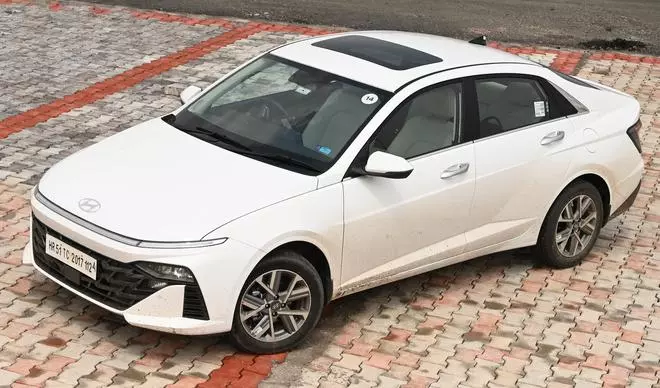
The impact of the increased dimensions is even more when the new Verna is viewed from the side. This is also the angle from which the roofline and the sportback, GT-like rear end’s design is best captured. The design language of the new Verna has references from other Hyundai models higher up in the hierarchy like the Tucson and the Sonata. That influence can be seen even in the waistline and side character line creases.
My favourite angle to view the new Verna is the rear.
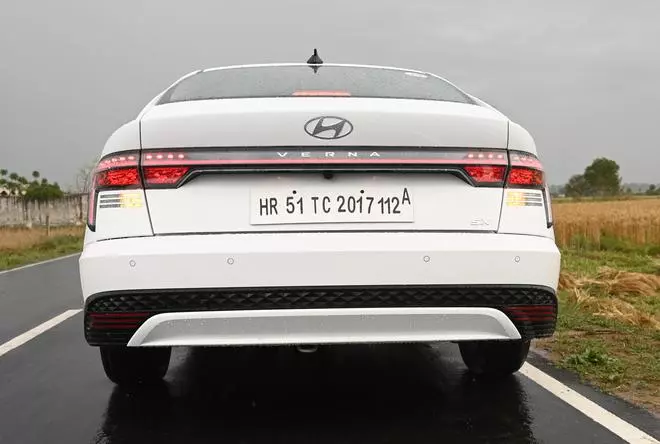
I feel the design’s overall strength comes from that appealing rear. The LED strip that connects the tail-lamps, the pert GT-like design coming from the steeply sloped roofline, the stubby boot lid and the layered light elements and the fender deliver great visual impact.
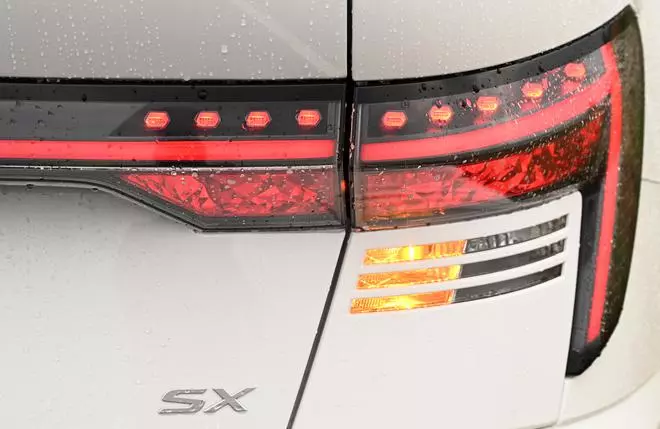
The SX trim variant also gets brushed aluminium door handles and special 16-inch alloys.
Cabin
There is a lot of European flavour to the new Verna’s design. The design excesses of the past have given way to a more universally appealing design and that extends into the cabin too. My first test mule was the SX variant of the 1.5MPi petrol with the IVT (intelligent variable transmission) gearbox.
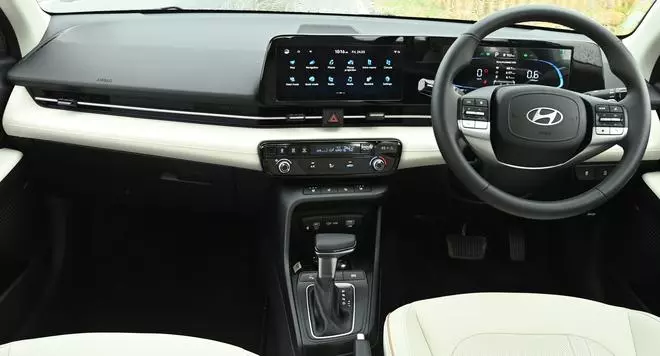
The dual-tone beige and black colour theme for the cabin really works for the interior, giving the cabin a crisp, fresh look. Adding to that sense of brightness and elegance is the rather minimalist layout for the dashboard and centre console.
The perforated and stitched beige leatherette front seats are ventilated and heated (in the top trims).
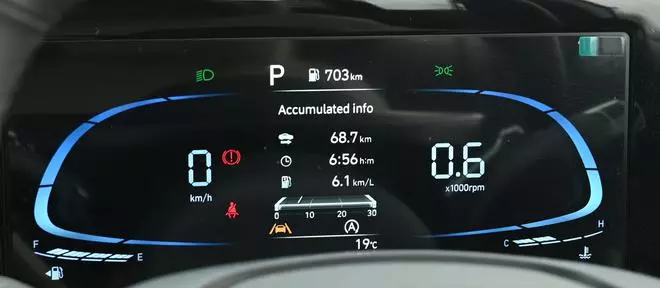
The dashboard fascia is also a matching soft-touch panel with stitched leatherette. After seeing so many upright, flat dashboards in multiple SUVs, it is good to see a curved, driver-focused one in a sedan.
The floating integrated unit on top of the dashboard is also curved and features the 10.25-inch infotainment screen and the digital instrument cluster adjacent to each other.
There is 64-colour ambient lighting in the cabin, with embedded light inserts in the door panel, dashboard and the instrument cluster changing colour, even based on drive mode selected.
The interesting feature in the cabin is the automatic climate control’s digital touch screen, which at the push of a button changes to a menu selection for the infotainment.
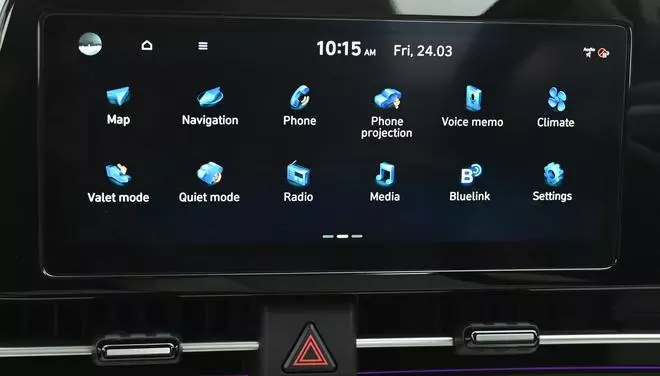
I suppose that could help keep your eyes on the road while attempting to choose from the menu and continue driving.
A whole list of other convenience features in the cabin include wireless smartphone charger, a cooled glovebox, manual privacy curtain for the rear glass, smart trunk opening and an 8-speaker Bose music system (SX(O) trim variant).
The top spec trim variants of the 1.5GDi Turbo engine also get all these features, but it features an all-black cabin colour theme. The new Verna’s cabin is genuinely more spacious.

The increase in wheelbase has translated into improved legroom and kneeroom at the rear. There is also more shoulder room brought on by the increased width.
The boot is said to offer a segment-leading 528-litres of luggage room.
Performance
The new Verna is being offered with two engines, each of which get two gearbox options.
There is no diesel engine on offer anymore, it is now only two petrol engines. And one of them is the 1.5-litre Turbo GDi petrol engine that was recently added as an option for Hyundai’s 3-row SUV – the Alcazar.
The 1,482cc, 4-cylinder, turbocharged direct-injection engine is being offered in pretty much the same state of tune in the Verna, producing an impressive 160PS of peak power and 253Nm of torque.
This engine can be paired with either a 6-speed manual transmission or the 7-speed DCT (dual-clutch) automatic gearbox. On the road, the first impression is that it is a bit less exciting than I thought it might be. But quickly the powertrain’s true potential comes through when it is egged on to deliver bursts of acceleration.
My test drive of the 1.5 Turbo GDi DCT took me down the New Delhi-Mumbai expressway. The DCT’s gearshifts are quick and imperceptible. The turbo kicks in early and once the traffic thins, that low-end torque helps pull the Verna into triple-digit speeds with ease.
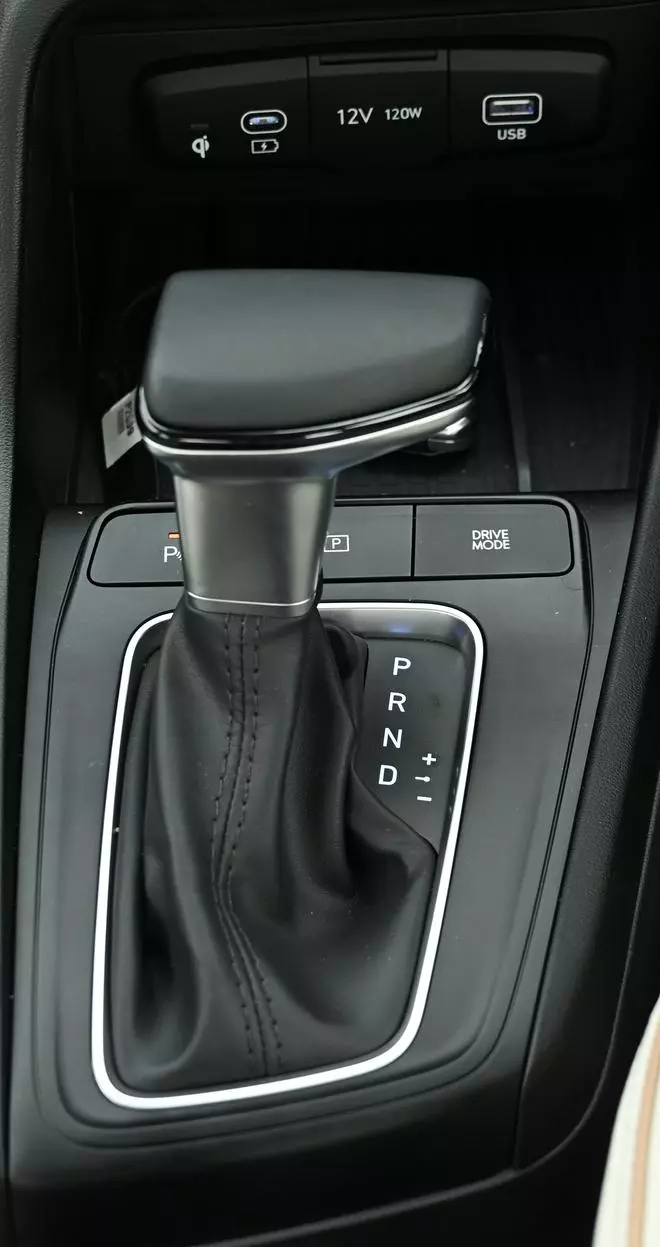
Of course, manual gear selection is still the best way to ensure that the car performs to your bidding. And that is possible using the steering wheel mounted paddles.
The other engine on offer for the new Verna is the 1.5 MPi petrol mill. The 1,497cc, 4-cylinder petrol engine delivers a peak output of 115PS and peak torque of 143.8Nm. This is also a refined mill and revs eagerly. Though it feels a tad less peppy compared to the Turbo GDi but it is still engaging to drive. And there is quite enough power and torque to dip into even while driving in city traffic; you’ll just need a bit more throttle input and keep the engine on a boil.
After a mix of city and highway, my test mule’s (1.5 MPi) MID indicated an average of 12.6kmpl. The rated mileages for the two engines are about 20kmpl and 19kmpl, with the auto trannys delivering a smidgen more than the manuals.
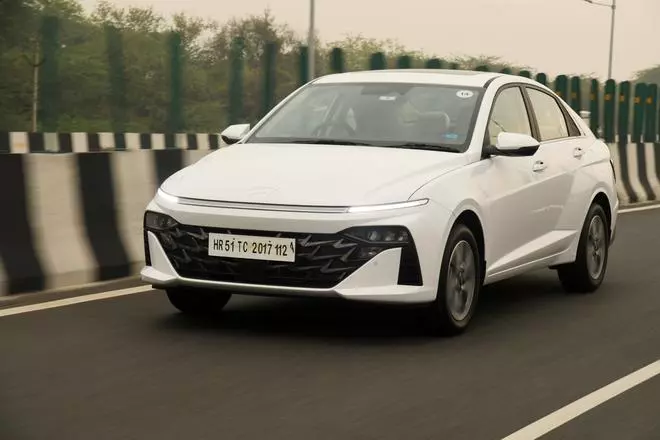
Both the engines are refined, and the cabin is well insulted and quiet. The ride quality is excellent, with the suspension feeling like it has been softened just a bit more than the previous gen. The new Verna dismissed bad roads and potholes with ease, with barely any of the impact being sent into the cabin.
Understeer which used to be an issue with the fourth-gen Verna is also almost completely gone in the new model. There were drive modes that I could choose from for both the powertrains, sports mode improves throttle response and also stiffens up the steering assistance.
It is good to see the focus on safety, and most of the features are offered across trims except for the base variant.
There is a whole suite of ADAS (advanced driver assistance systems) features on offer, making the new Verna a Level 2 autonomous vehicle.
The most useful ADAS during my drive, and likely to be practical on our roads, were rear cross traffic alert, adaptive cruise control, blind spot collision warning and lane keeping assist. My only quibble with the new Verna was that while there is enough bite, there is not enough brake pedal feel. The top trim 1.5 Turbo GDi is offered with all four disc brakes.
Bottom Line
The new Verna is packed with more tech, including about 67 connected car features, many that have already been offered with other models in the portfolio. There is a whole list of voice commands to activate specific functions in the Verna. The addition to this feature is the new ‘Hinglish’ commands recognition.
The new Verna has been priced in the range of ₹10.9 lakh to ₹17.4 lakh, which is just a bit lower than the price tags of some of its competitors. The Verna is also more loaded with features compared to many of its counterparts in the sedan segment.
























